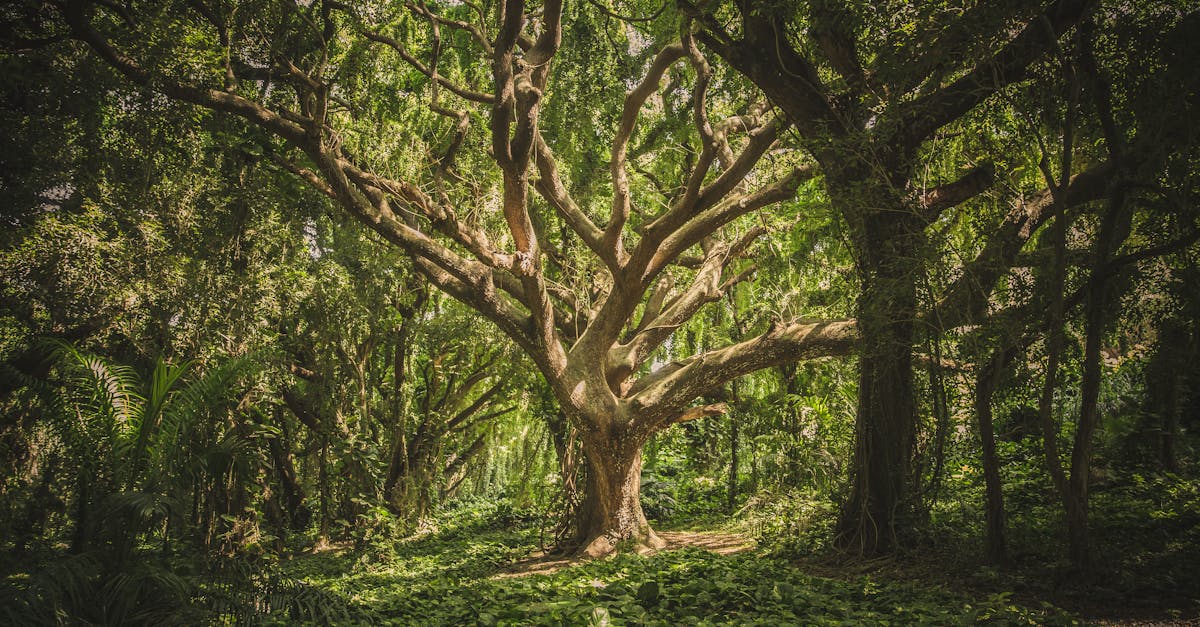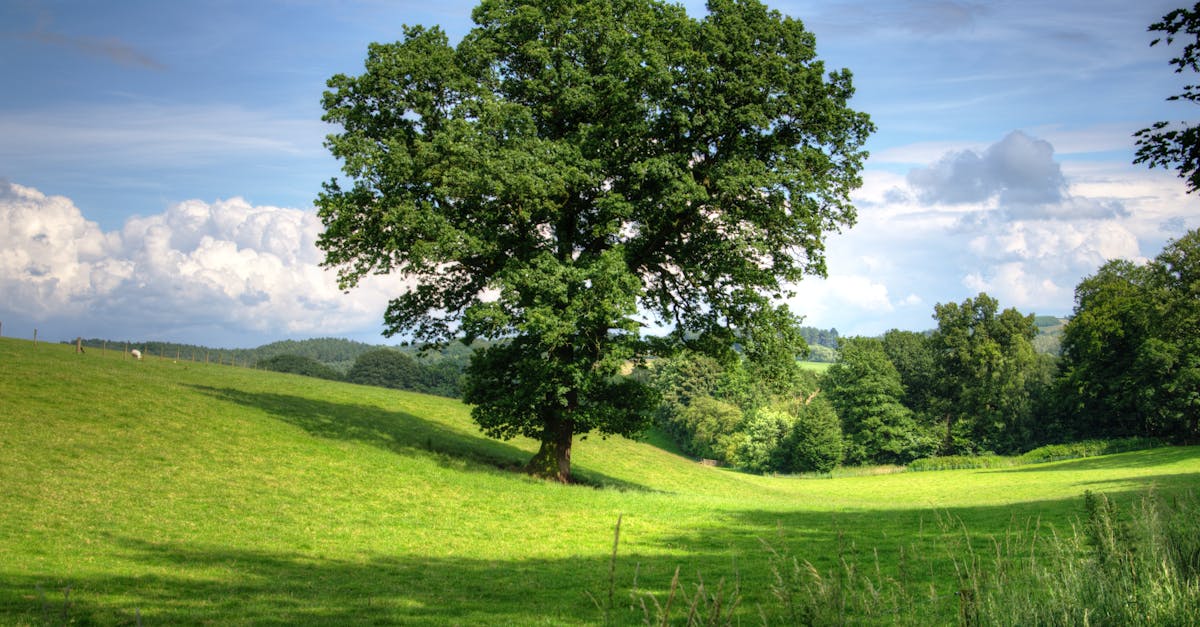
Common Mistakes to Avoid When Planting Trees
Common Mistakes to Avoid When Planting Trees
One common mistake to avoid when planting trees is not selecting the right tree for the specific planting location. It's crucial to consider factors such as soil type, sunlight exposure, and climate suitability to ensure the tree's successful growth and longevity. Planting a tree in an area with poor soil drainage or insufficient sunlight can hinder its development and lead to issues down the road. Therefore, it's essential to research and choose a tree species that will thrive in the designated planting spot.
Another mistake to steer clear of is planting trees too deeply in the ground. When the root flare of a tree is buried beneath the soil, it can suffocate the roots and hinder the tree's ability to absorb nutrients and water effectively. To avoid this, always ensure that the root flare – where the roots transition into the trunk – is visible above ground level after planting. Properly setting the tree at the right depth is crucial for its health and growth.
Overcrowding and Improper Pruning
Overcrowding can be a common mistake made during tree planting. Planting trees too closely together can lead to a competition for sunlight, water, and nutrients, hindering the growth of the trees. Proper spacing is crucial to ensure that each tree has enough room to develop a healthy root system and canopy. Additionally, overcrowded trees are more susceptible to diseases and pest infestations due to the lack of airflow and increased humidity within the dense foliage. It is important to follow recommended spacing guidelines based on the species of trees being planted to promote optimal growth and sustainability.
Improper pruning practices can also negatively impact the health and growth of trees. Cutting tree branches incorrectly or at the wrong time of year can leave the tree vulnerable to diseases and pests. It is essential to use the right tools and techniques when pruning trees to promote healthy growth and maintain their structural integrity. Improper pruning can lead to weak branches that are prone to breakage, affecting the overall health and aesthetics of the tree. Regular pruning can help maintain tree health, but it is essential to do so with care and consideration for the tree's natural growth patterns and requirements.
Importance of Mulching After Tree Planting
Mulching is a crucial step after tree planting that is often overlooked by many gardeners. Applying a layer of mulch around the base of the tree serves multiple purposes that ultimately benefit the tree's growth and health. Firstly, mulch helps in conserving moisture in the soil, which is especially important in the initial stages after tree planting when the roots are establishing themselves. By reducing water evaporation, mulch ensures that the tree receives an adequate and consistent water supply, promoting healthy growth.
Furthermore, mulch acts as a barrier, preventing weeds from competing with the newly planted tree for nutrients and water. This aids in the tree's establishment and reduces the need for frequent weeding, allowing the tree to focus its energy on growth rather than fighting off competing plants. Additionally, as the mulch decomposes, it enriches the soil with essential nutrients, further supporting the tree's development. In essence, mulching after tree planting is a simple yet effective practice that can significantly enhance the success and growth of newly planted trees.
Benefits of Mulch in Tree Growth
Mulching plays a crucial role in tree growth as it offers a multitude of benefits. Firstly, mulch helps in retaining soil moisture, ensuring that the newly planted tree receives an adequate water supply for sustained growth. By reducing water evaporation, mulch creates a more stable environment for Tree Planting, allowing roots to establish themselves effectively. Additionally, mulch acts as a protective barrier, shielding the tree's roots from extreme temperatures and preventing weed growth that could compete for essential nutrients.
Moreover, mulch aids in improving soil fertility by gradually decomposing and enriching the soil with vital nutrients. As the mulch breaks down, it enhances the soil structure, promoting better aeration and drainage essential for Tree Planting. Consequently, the tree's root system can expand more easily and access the necessary nutrients and oxygen for healthy growth. Overall, by incorporating mulching into the Tree Planting process, individuals can significantly boost the chances of their trees thriving and flourishing in the long term.
Protecting Trees from Pests and Diseases
Protecting trees from pests and diseases is crucial to ensure their long-term health and growth. One common issue that can arise after tree planting is pest infestation, which can weaken the tree and hinder its ability to thrive. Regularly inspecting trees for signs of pests such as aphids, scale insects, or caterpillars is essential in identifying and addressing the problem before it escalates.
In addition to pests, trees are also susceptible to various diseases that can impact their overall well-being. Fungal infections, bacterial diseases, and viral illnesses can all pose a threat to newly planted trees. Properly diagnosing these ailments and implementing appropriate treatment measures is essential in safeguarding the health of the tree for years to come. By staying vigilant and proactive in protecting trees from pests and diseases, tree planters can help ensure the success of their planting endeavors.
Identifying and Treating Common Tree Issues
Identifying and treating common tree issues is essential in ensuring the successful growth and development of trees post-planting. One common issue that many trees face is poor soil drainage, leading to waterlogged roots and potential root rot. Symptoms of this issue include wilting leaves, stunted growth, and yellowing foliage. To treat this problem, improving the soil drainage through proper techniques like adding organic matter and creating raised beds can be effective solutions to promote healthy tree growth.
Another prevalent tree issue is nutrient deficiencies, which can manifest through discolored leaves, poor growth, and overall weakened appearance of the tree. Proper identification of which nutrients are lacking is crucial in treating this problem. Adding fertilizer or nutrient-rich amendments to the soil can help replenish the nutrients needed for the tree to thrive. Regular soil testing can aid in monitoring the nutrient levels and adjusting the treatment accordingly. Taking proactive measures to address common tree issues can significantly impact the overall health and longevity of trees, ensuring that they flourish in the environment post-Tree Planting.
FAQS
When is the best time to plant trees?
The best time to plant trees is usually in the early spring or fall, when the weather is mild and there is enough time for the roots to establish before extreme temperatures set in.
Can trees be planted in the summer?
While it is possible to plant trees in the summer, it is generally not recommended due to the stress that high temperatures and lack of rainfall can put on newly planted trees. It is best to avoid planting trees during the peak of summer.
What are the benefits of planting trees in the fall?
Planting trees in the fall allows them to establish their root systems during the cooler months before the onset of winter. This gives them a better chance of thriving once the growing season begins again in the spring.
Is it okay to plant trees in the winter?
Planting trees in the winter can be challenging due to frozen ground and harsh weather conditions. It is usually best to wait until the ground thaws and the weather warms up before planting trees.
How can I determine the best time to plant trees in my specific region?
The best time to plant trees can vary depending on the climate and growing conditions in your region. It is recommended to consult with a local arborist or gardening center for specific guidance on the ideal planting times for trees in your area.


